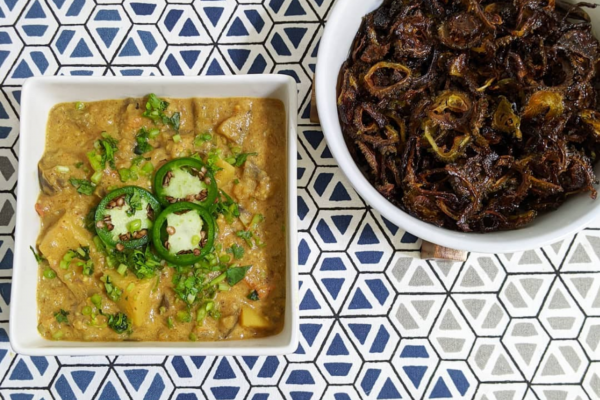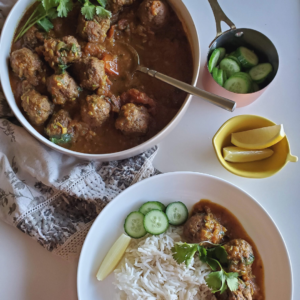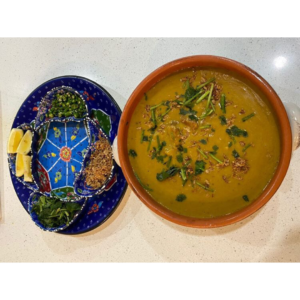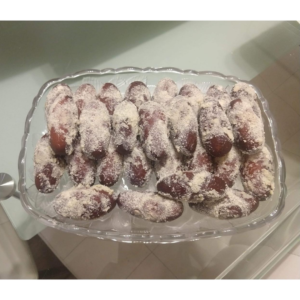
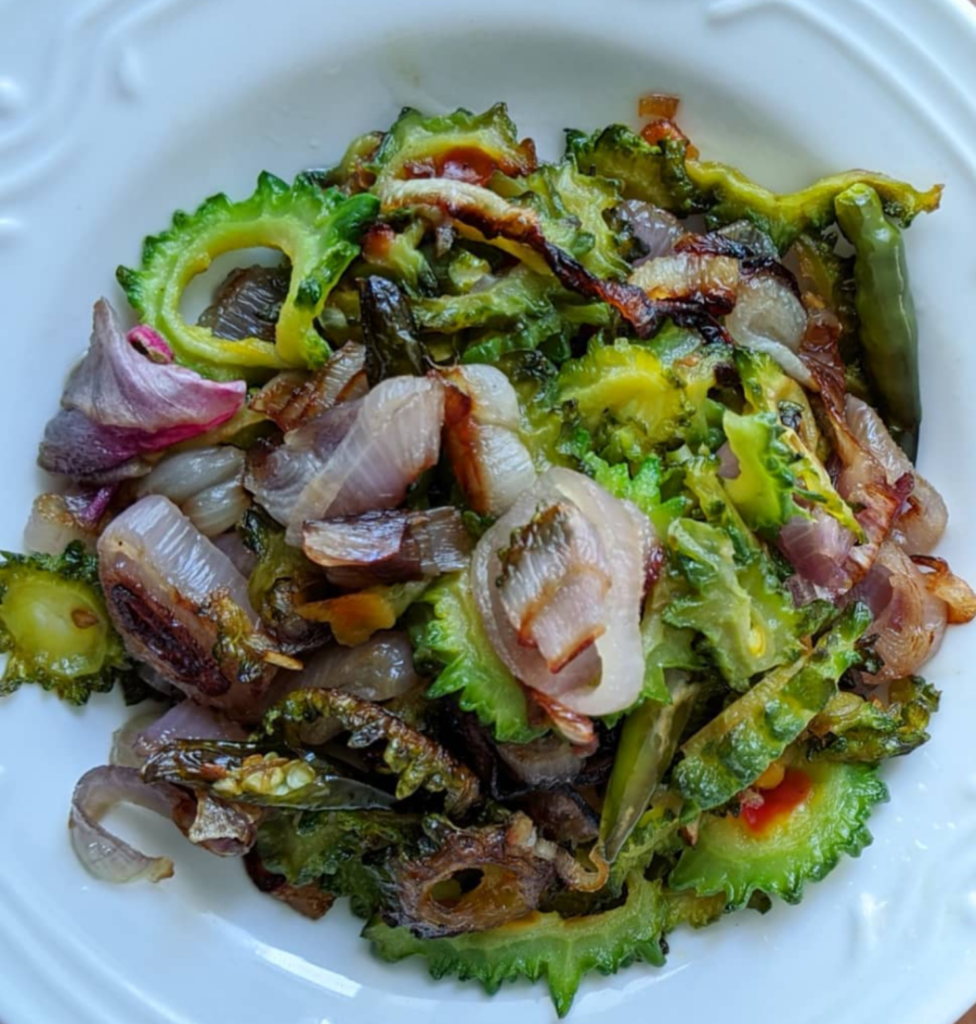
A Tale of Korola, Jhinga and Kakrol

Sumaiya Zaman
INGREDIENTS
- oil for frying
- slivered Thai green chiles (4-5 depending on your spice level)
- thinly sliced onions or shallots (½ an onion or one whole shallot)
- thinly sliced korola with a mandolin – about 10 korola as the quantity will diminish once it’s deep fried
STEPS
For best results, slice both onions or shallots and korola with a mandolin to ensure that they’re all the same thickness and fry evenly.
Heat a deep saucepan with oil enough to deep fry.
Individually fry all of the ingredients: green chiles, and then remove, onions then remove, and korola then remove – ensure that all items have browned, but careful not to burn them.
Combine fried vegetables in a mixing bowl and salt according to preference and serve. Best accompanied with daal and bhaat, and topped with a tiny bit of ghee!
By Sumaiya Zaman
As a Diasporic Bengali growing up in the United States, from an early age I have learned how our respective identities are inherently tied to the food we cook and consume. For me, Bangladeshi cuisine along with language and culture has played a significant role in the formation of my identity as a second-generation immigrant.
In conversing with foodie friends during the onset of this pandemic, our conversations have revolved around what constitutes a type of cuisine being revered on a global scale. These issues of culinary preferences almost always adhere to the “white gaze,” focusing on dishes from European nations and elevating French, German, etc. cuisines.
In the 1980s and 1990s, we had quintessential Indian restaurants in American cosmopolitan cities that served up the butter chickens, daals makhanis, palak paneers and the like, however, unfortunately there were no Bengali items on these menus. Ethnic Bengali enclaves began popping up around the US and catering to this clientele, but those that frequented these restaurants were generally Bangladeshi themselves. Slowly, the emergence of social media, particularly Instagram and YouTube is changing this narrative and bringing more recognition to our national and regional dishes.
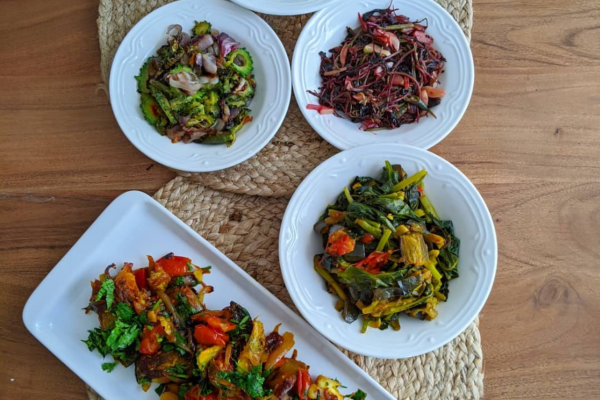
In our household, I grew up watching my gardening-obsessed Abbu “smuggle” coveted deshi vegetable seeds from Dhaka which ranged from lau, korola, kakrol, potol, and all of the vegetables that were near impossible of find in America 30 years ago. I watched my mom carefully prepare these vegetables and cook them to perfection. My dad’s love of gardening even provided him a spread, albeit tiny, in the LA Times, and a snippet on a Shykh Seraj show during one of his visits to California many years ago.
Through my dad’s love of gardening and my mom’s love of cooking, along with foodie grandparents on both sides, I have inherited a love of Bangladeshi food and actively try to preserve cultural traditions through food in my own house.
When my peers would scoff at the idea of eating korola, I would be delighted when I got home from school and crispy fried korola bhaaji with gorom shada bhaat and daal was on the dinner table. Korola, otherwise known as bitter melon, is a vegetable that originated in the Indian subcontinent and was later introduced to China in the 14th Century. The vegetable itself can be prepared in a number of ways: fried in bhaaji, without or without alu, cooked with chingri, a jhol torkari with maach, and so many other ways. For me, korola is a love language — one that I’ve shared with fellow Diasporic Bengalis whether that be my cousins, friends, or families. Our mutual love of korola has brought us together for many meals, and I hope it does the same for you!
